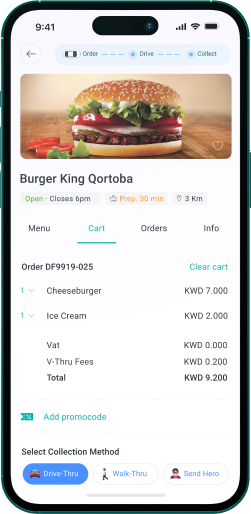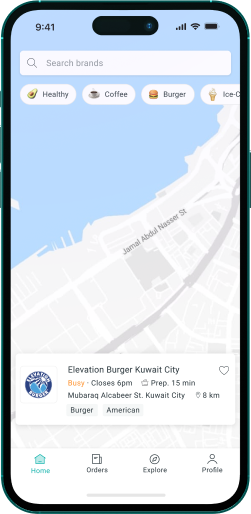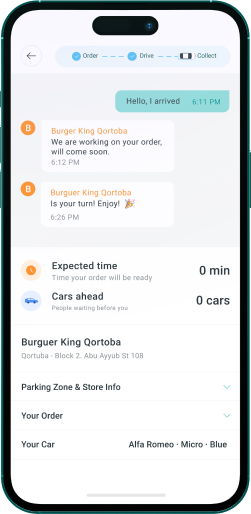Agile SCRUM Methodology
Leonardo Ferreira
17 meses atrás / 4 minutos de leituraIntroduction
This article aims to present the concept of the agile Scrum methodology, used in all 80 Lines projects. For this, the main features, their values, workflow, team management and their application in real projects will be explained.
Scrum
Scrum is one of the most used agile methodologies in the world. It is a set of processes that drive the development of complex products, serving as a toolbox. Although it is commonly used for software development, Scrum can be applied to all types of teamwork, hence its popularity. Often considered an agile project management framework, it describes a set of meetings, tools, and roles that work together to help teams organize and manage work.
What are the pillars of Scrum?
Transparency:
Process visible to everyone.
Communication clear and transmitted.
Don't hide problems.
Inspection:
Constant inspection to guarantee value. Caution: performing inspections all the time can paralyze the team.
Adaptation:
Adaptation of process and product to changes.
Route changes are part of the process.
Don't get attached to what was done if it doesn't generate value.
Accept and adapt to changes and take competitive advantages from them.
Scrum Values
Focus: Team fully focused to achieve the goals set.
Courage: Solving complex problems by doing the right thing.
Respect: Treat all team members with respect.
Openness: Being open to all work and new challenges.
Commitment: The team is committed to fulfilling all proposed requirements by supporting each other.
Scrum Team
The Scrum team is an agile team, composed of multidisciplinary teams, self-organizing (they can choose the best way to carry out their work) and having 3 defined roles, each with its responsibilities. They are: Product Owner (P.O.), Development Team and Scrum Master (S.M.).
Product Owner (P.O.)
Owns the vision of the product, defines how it should be and why. Their main tasks are to convey to the team their vision of the product and the requirements necessary for its delivery, being the bridge between the team, the client and the stakeholders (people and organizations that can be affected by a project or company). Every change that the team wants to make must be directed to the P.O, so it is very important that they interacts with the development team.
Development Team
It is a multifunctional, autonomous and self-organizing team, responsible for product development. Its main tasks are:
- Develop the product to achieve the Sprint goal, ensuring the quality of what is produced, as well as tracking its progress;
- Identify and inform the Scrum Master (S.M.) about possible problems that may impede the development of the work, preventing them when possible;
- Collaborate with the Product Owner (P.O.) whenever necessary to clarify doubts or request changes regarding the product;
- Obtain feedback from customers and other parties involved in the project, presenting the results obtained at the end of the Sprint (Sprint Retrospective).
Scrum Master (S.M.)
They are the Scrum specialist, responsible for helping the team to have maximum performance, facilitating the development of the project. To this end, they spreads the values and practices of Scrum, holds daily follow-up meetings with the team and ensures that it is fully productive and unhindered. In addition, they helps the team and the rest of the organization to develop a Scrum approach that performs best, respecting its particularities.
Scrum Events
For the team that is producing, staying in meetings all the time is not productive, so, to create a routine and minimize the need for meetings, there are events. They are: Sprint Planning (alignment), Dailies (follow-up), Internal retrospective Sprint Review (reflection), Sprint Review (review) and Sprint (full period).
Product Backlog
The Product Backlog is directly linked to the Product Owner (P.O.), responsible for its creation, content, availability and prioritization. Its function is to clearly document all the requirements that arise during the development of a project.
Sprint
It's a work cycle. The sprint duration time period is usually defined as two to four weeks where the team develops tasks and aligns with the Product Owner on what functions will be implemented and tasks will be performed.
Sprint Planning
It is the planning of the tasks to be carried out during the sprint. For this, the Product Owner/Tech Lead (a professional who has the function of leading a software development team) defines the sprint objective and the functionalities that must be developed in it, creating the necessary tasks.
Dailies
Meetings for planning activities in the next 24 hours, with a maximum time of 15 minutes, being held every day. Its purpose is to discuss the progress of work and brainstorms (gathering of ideas) to find solutions, possible failures and share information. The team always works by answering three questions:
- What did I do yesterday?
- What am I going to do today?
- Is there something stopping me?
Internal Sprint Review (Retrospective)
The entire team comes together to share their opinion about the Sprint, reflect on the practices adopted, review the entire process of the work done and identify improvements in the way the team performs and/or optimizes its work. In addition, the development team subdivides tasks to gain greater control over the work to be performed. Prioritization in the Backlog (list or history of projects and activities that need to be completed) is done by scoring (Story Points/Planning Poker).
Story points or planning Poker: score the backlog items, following a scoring scale based on hours worked, as follows:
- 0, fast activities, done in up to 15m.
- 1, activities that take up to 1 hour to do.
- 2, activities that take up to 2 hours to do.
- 4, activities that take a morning or afternoon to do.
- 8, activities that take a whole day to do.
At the end of this step, a slide is created with all the relevant information about the finished Sprint, and the main points to be carried out in the new Sprint.
Sprint Review
Meeting in which the development team reviews the entire initial sprint plan, presenting everything that was developed, the obstacles faced and the difficulties witnessed in fulfilling it. In addition, the presentation of the planning for the next Sprint is also carried out. Every process is monitored by the Stakeholders.
80 Lines Scrum Flow:

References


